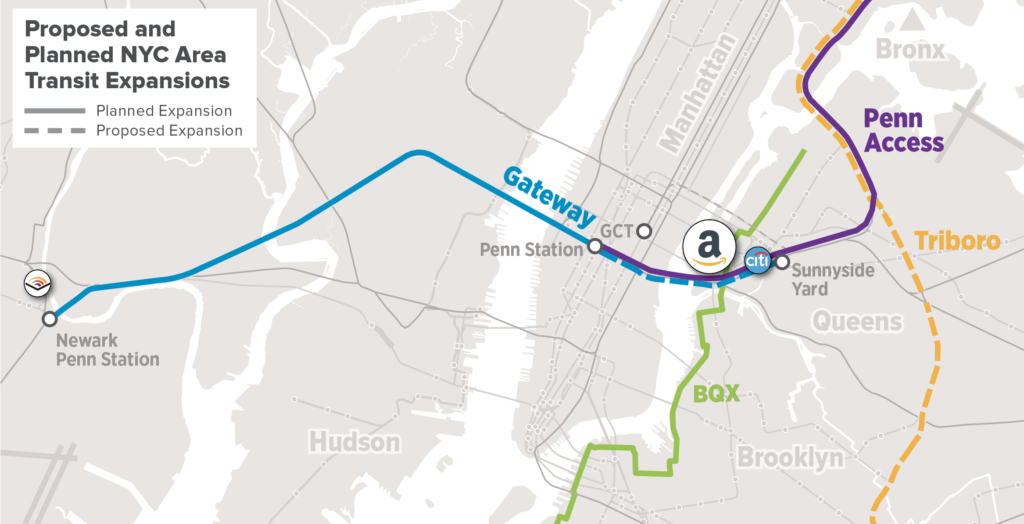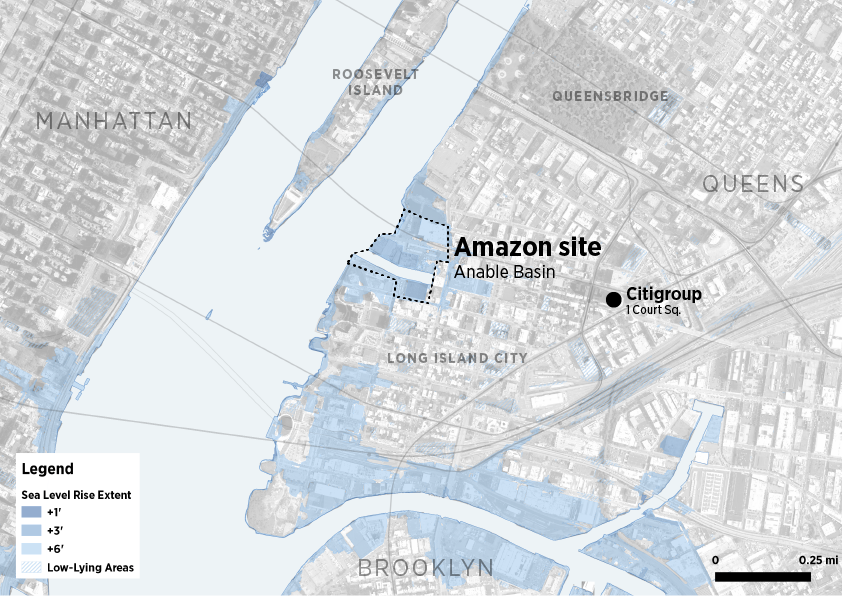We’re sure to be talking about the Amazon deal for months to come. New York is getting an enviable 25,000 new jobs, which will benefit the people that get them and boost the City and State’s coffers through payroll taxes and other taxes that come with the goods, services and homes that Amazon employees will buy. Amazon is getting a very good deal as well—not just tax incentives but a talented workforce made possible by New York’s past investments.
The best way to make sure this deal is a win for all is for the City and State to continue to invest in infrastructure and get Amazon to help make it happen. Here are three ways we need to prepare for the arrival of Amazon.
Build more affordable housing in Long Island City and in commutable neighborhoods across the region.
The City had projected that Queens would gain 82,000 residents in the next 20 years. Now Amazon plans to bring 25,000 to 40,000 employees to Long Island City by 2034. If half live in Queens in two- or three-person households, that would be nearly 50% of the people that the City was planning for—from just one company and in less time.
There were plans in the works to create more housing, including more affordable housing in the area. Prior to the Amazon deal developers planned to create upwards of 6,000 new units including 1,500 set aside for low- and middle-income New Yorkers. But Amazon has indicated they are not planning to create any housing on their parcel.
The City and State must accelerate the production of housing, including more affordable housing in and around Long Island City. And they must look to ways to improve transit connections to the area so that people who need to look elsewhere for rents they can afford still have a reasonable commute.

Pass congestion pricing, fix transit, then expand it.
Employees who live outside of Long Island City will need reliable ways to get there.
Amazon’s impending arrival brings even more urgency: The Governor and State Legislature must adopt a congestion pricing plan to ease traffic and create a much-needed, sustainable source of revenue to begin to fix the buses and subways.
New bus routes and more robust bike infrastructure will be needed for commuters to take full advantage of a new rail stop at Sunnyside Yard or just to get from Queensboro Plaza to Amazon. Then, as Amazon grows, new transit projects can better connect surrounding areas. The BQX streetcar would link Long Island City to neighborhoods along the Brooklyn and Queens waterfronts.

A new commuter rail station at Sunnyside Yard would provide Long Island residents an easy way to reach jobs in Long Island City. Amazon should champion getting the Gateway Program built and extended into Sunnyside and beyond; this plan would give New Jersey residents better access to jobs in Queens and Long Island, and vice versa. It would also create a direct link between a major Amazon hub in Newark, where subsidiary Audible is located, and their new campus in Long Island City. And another project in the works, Penn Access, could link Metro-North passengers in the Bronx, Westchester and Connecticut directly with Queens.
Those investments would put hundreds of thousands of additional workers within commuting distance of Long Island City and create new possibilities for affordable housing and economic development across the region.

Protect Long Island City from sea level rise and storm surge, and make the Amazon development a model for resilience and sustainability.
Amazon will likely follow the lead of other big companies doing big developments in recent years to ensure that their buildings are protected from flooding. But this alone will not help the surrounding neighborhood. The City and State should ensure that the infrastructure investment fund will be used for resilience projects that protect the greater Long Island City neighborhood from sea level rise and storm surge.
Read the full white paper.
